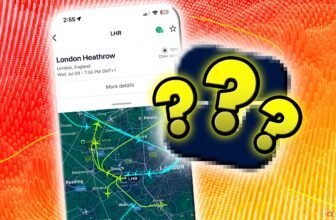Large ocean waves engulfing tiny boats are the stuff of nightmares—but it surely seems rivers additionally kind flood waves which can be nothing to sneeze at.
That’s in response to researchers from Virginia Tech and NASA’s Jet Propulsion Laboratory (JPL), who measured three giant flood waves, additionally known as circulate waves, in U.S. rivers through satellite tv for pc information. They declare their method is the primary of its type, and will inform flood mitigation and warning efforts.
Whereas tides and wind drive ocean waves, intense rain or snowmelt can set off river waves, which encompass water surges that may span a whole bunch of miles. River waves are essential to the motion of vitamins and organisms, however may also be harmful.
“Analyzing circulate wave dynamics to reply questions comparable to, ‘How excessive might water ranges rise throughout a circulate wave?’ and ‘How briskly do circulate waves journey?’ has necessary implications for human security, infrastructure design and administration, and fluvial ecology,” the researchers wrote in a study printed Might 14 within the journal Geophysical Analysis Letters.
The group investigated this phenomenon in information from NASA and the French house company CNES’ Floor Water and Ocean Topography (SWOT) satellite tv for pc. SWOT can detect the peak of just about all our bodies of water on Earth’s floor by capturing microwaves on the water and measuring the time it takes for them to bounce again. “Along with monitoring whole storage of waters in lakes and rivers, we zoom in on dynamics and impacts of water motion and alter,” Nadya Vinogradova Shiffer, a SWOT program scientist who didn’t take part within the research, stated in a NASA statement.
Lead writer Hana Thurman, a researcher within the Division of Geosciences at Virginia Tech, discovered three apparent examples of river waves inside the SWOT information. One occurred in Montana’s Yellowstone River in April 2023, when a 9.1-foot-tall (2.8-meter-tall) crest all of a sudden rose and sped towards North Dakota’s Missouri River. The wave’s peak stretched throughout 6.8 miles (11 kilometers), and was possible the results of a collapsed ice jam farther up the river.
“We’re studying extra concerning the form and velocity of circulate waves, and the way they modify alongside lengthy stretches of river,” Thurman defined.
A second and considerably extra dramatic river wave came about in January 2024 within the Colorado River in Texas. It was 30 ft (9 m) tall, spanned 166 miles (267 km), and moved at round 3.5 ft (1.07 m) per second for over 250 miles (400 km). The third river Thurman analyzed through SWOT information shaped in Georgia’s Ocmulgee River two months later: 20 ft (6 m) tall, stretching throughout over 100 miles (165 km), and touring at round a foot (0.33 m) per second for greater than 124 miles (200 km). Rainfall possible brought on each these circumstances.
Whereas specialists can measure river waves with stream gauges, they’re sparsely distributed. As such, “satellite tv for pc information is complementary as a result of it could assist fill within the gaps,” stated George Allen, a Virginia Tech hydrologist and co-author of the research. The NASA assertion likened stream gauges to freeway toll cubicles—offering measurements at mounted factors—whereas SWOT is extra like a visitors helicopter taking aerial pictures because it passes by.
Evidently, such space-based observations can bolster flood detection and warning techniques. “If we see one thing within the information, we are able to say one thing,” Cedric David, a hydrologist on the JPL, concluded. “For a very long time, we’ve stood on the banks of our rivers, however we’ve by no means seen them like we are actually.”
Trending Merchandise

Acer Nitro 31.5″ FHD 1920 x 1080 1500R ...

ASUS 31.5” 4K HDR Eye Care Monitor (VP327Q)...

HP 330 Wireless Keyboard and Mouse Combo R...












